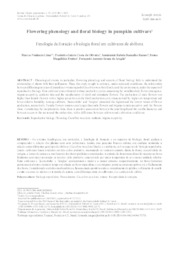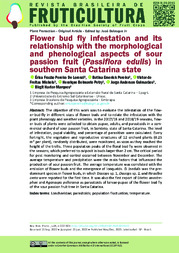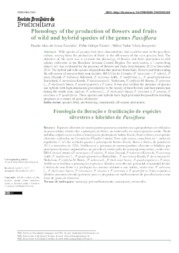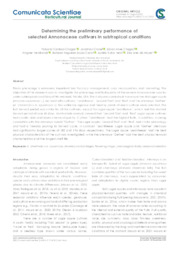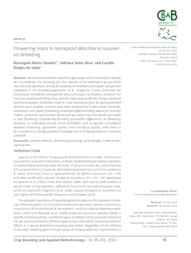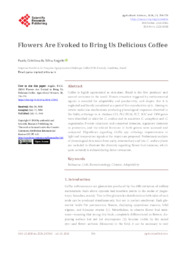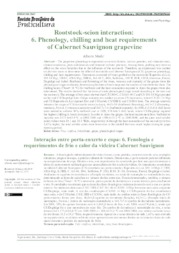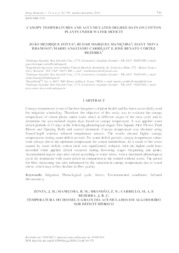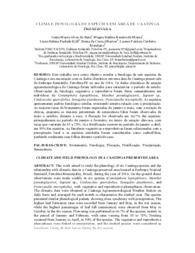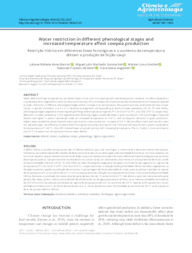Search Publications
Filter by:
| Author(s): LIMA, M. V.; OLIVEIRA, F. I. C. DE; RAMOS, S. R. R.; FREITAS, B. M.; ARAGAO, F. A. S. de Phenological events, in particular, flowering phenology and aspects of floral biology help to understand the relationship of plants with their pollinators. Thus, this study sought to estimate, under s... ... |
| Author(s): DE LORENZI, E. F. P.; PEREIRA, B. E.; MICHELS, V. de F.; PETRY, H. B.; GUIMARAES, J. A.; HARTER-MARQUES, B. The objective of this work was to evaluate the infestation of the flow-er-bud-fly in different sizes of flower buds and to relate the infestation with the plant phenology and weather variables. In the... ... |
| Author(s): ESASHIKA, D. A. de S.; FALEIRO, F. G.; JUNQUEIRA, N. T. V.
|
| Author(s): CHAGAS, P. C.; CRANE, J.; CHAGAS, E. A.; VENDRAME, W.; COSTA, B. N. S.; RUBIO NETO, A.; MOURA, E. A. de Plants phenology is extremely important tool for crop management, crop manipulation, and marketing. The objective of this research was to investigate the phenology and fruit quality of the several Ann... ... |
| Author(s): SIMEÃO, R. M.; SILV, A. S.; VALLE, C. B. do Tetraploid Brachiaria ruziziensis genotypes which reproduce sexually are essential for the breeding of other species of the Brachiaria genus which reproduce by apomixis. Aiming at studying the availab... ... |
| |
| |
| Author(s): ZONTA, J. H.; MANIÇOBA, R. M.; BRANDAO, Z. N.; CARRILLO, M. A.; BEZERRA, J. R. C. Canopy temperature is one of the best integrators of plant health and has been successfully used for irrigation scheduling. Therefore, the objective of this study was to evaluate the canopy temperatur... ... |
| Author(s): SENA, J. M. A. de; MOURA, M. S. B. de; KIILL, L. H. P.; ALBERTON, B. de C.; MORELATTO, L. P. C. Este trabalho teve como objetivo estudar a fenologia de seis espécies da Caatinga e sua associação com os dados climáticos em uma área de Caatinga preservada da Embrapa Semiárido, Petrolina-PE no ano... ... |
| Author(s): BARROS, J. A. R.; GUIMARÃES, M. J. M.; SIMOES, W. L.; MELO, N. F. de; ANGELOTTI, F. Water deficit and high temperatures are abiotic factors that most limit plant growth and development. However, its effects depend on crop development stage and on stress duration and intensity. Thus,... ... |
Observation
Some of Embrapa's publications are published as ePub files. To read them, use or download one of the following free software options to your computer or mobile device. Android: Google Play Books; IOS: iBooks; Windows and Linux: Calibre.
Access other publications
Access the Agricultural Research Database (BDPA) to consult Embrapa's full library collection and records.
Visit Embrapa Bookstore to purchase books and other publications sold by Embrapa.

